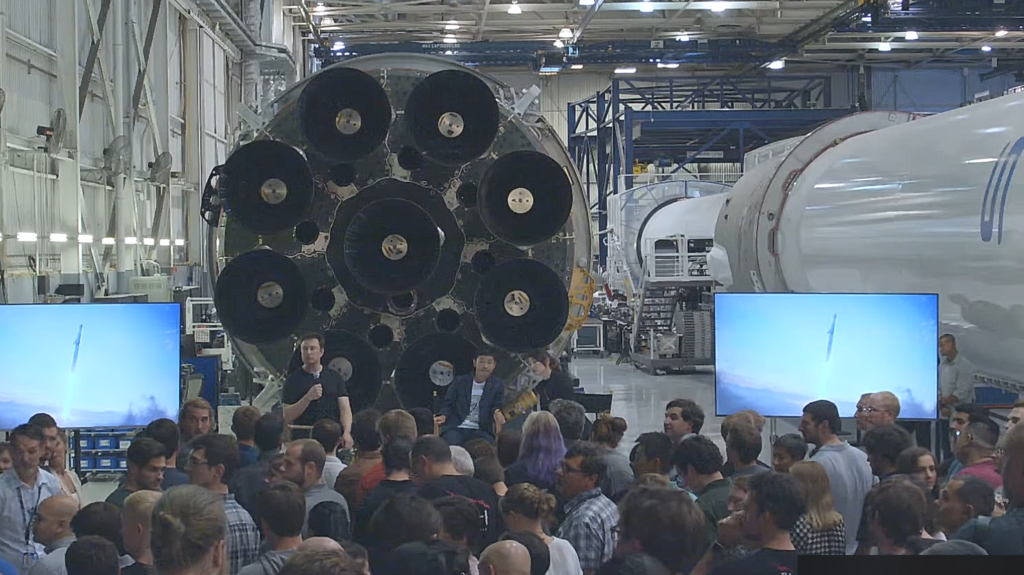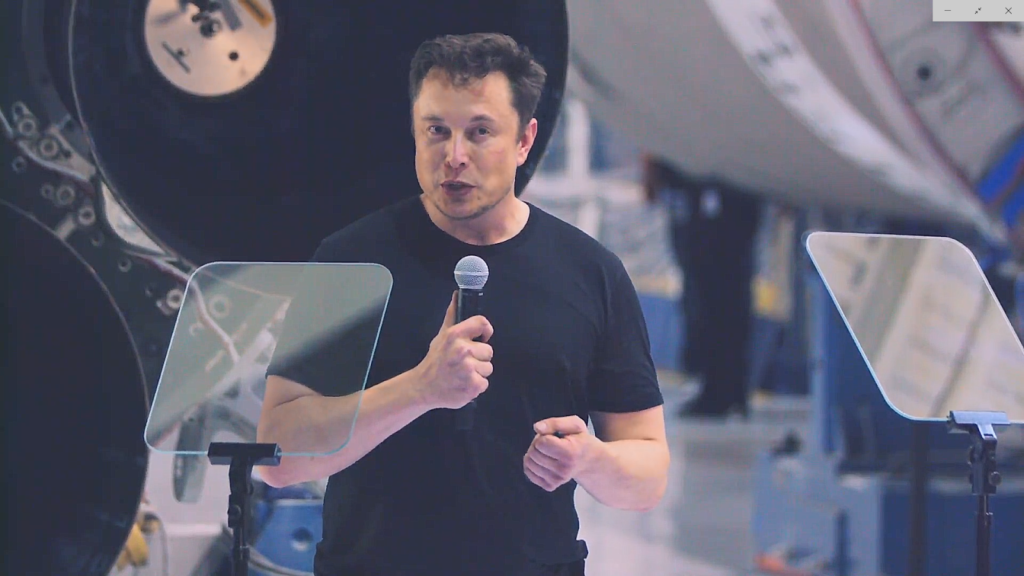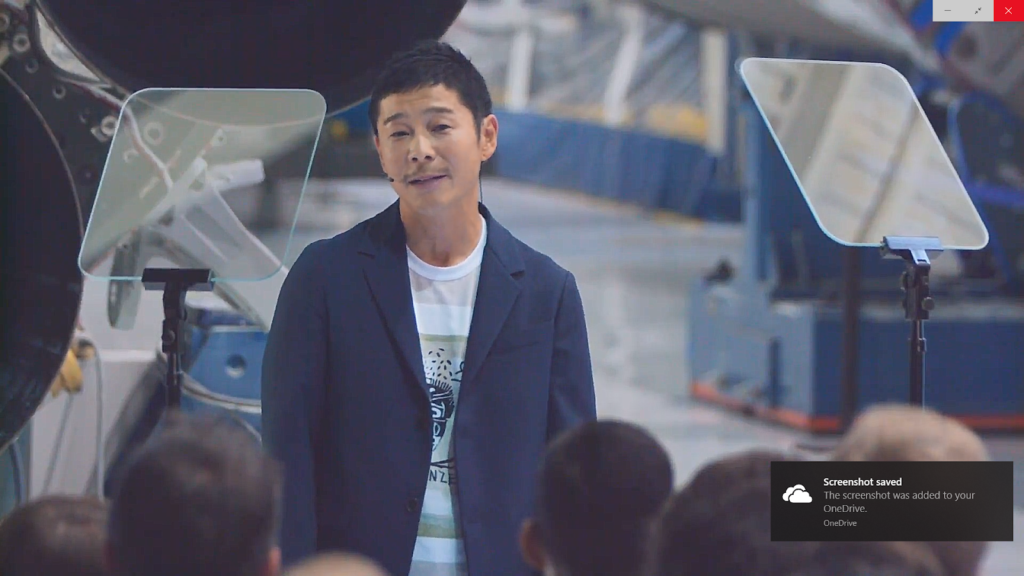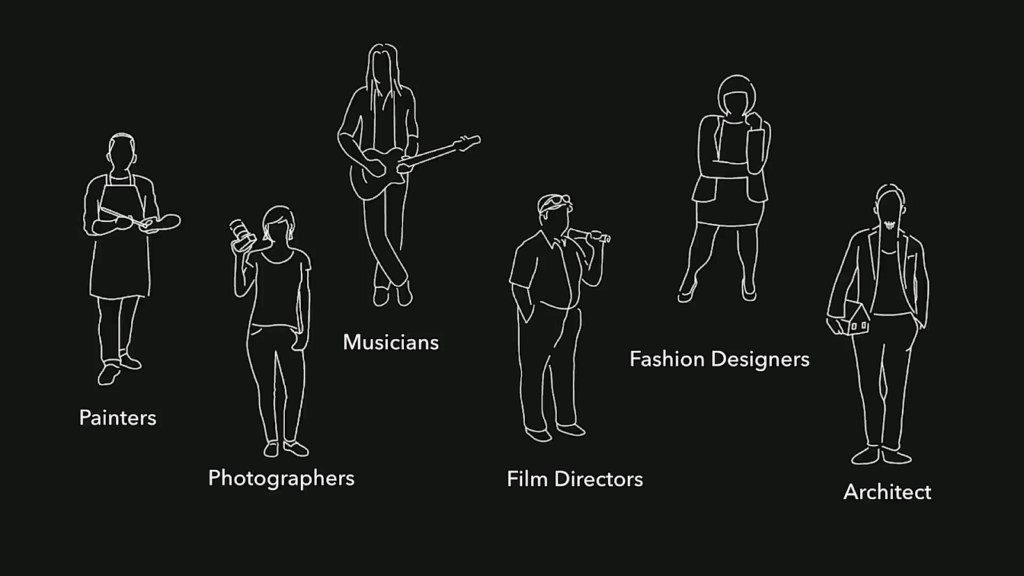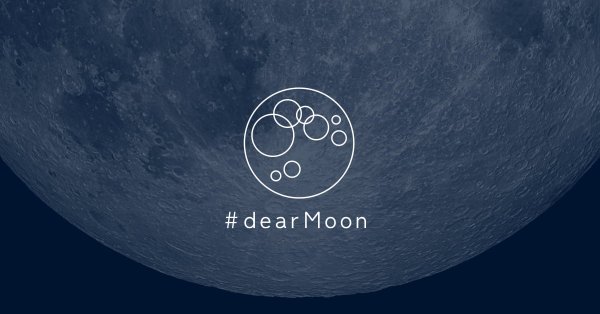Ken Kremer
— SpaceUpClose.com — 17 September 2018
CAPE CANAVERAL,
FL – Japanese fashion retail billionaire Yusaku Maezawa will be the first private paying
passenger to fly to the Moon on SpaceX’s powerful BFR rocket currently under development – and in a very
inspirational move he’ll be taking along a crew of 6 to 8 artists along for the
journey in lifting off in perhaps as soon as five years.
Maezawa as the mystery person signed up for the first lunar mission as a private
citizen – during a live webcast Monday evening direct from SpaceX Headquarters in
Hawthorne, Calif., attended by media and a big crowd of company employees in
the presence of the forms Falcon 9 rockets resting horizontal on the factory
floor.
earlier than 2023 on a flight to the Moon and back lasting about 4 or 5
days.
paying for the cost of the development of BFR.”
very close, maybe as close as 125 miles above the lunar surface, but not land
or orbit our nearest neighbor.
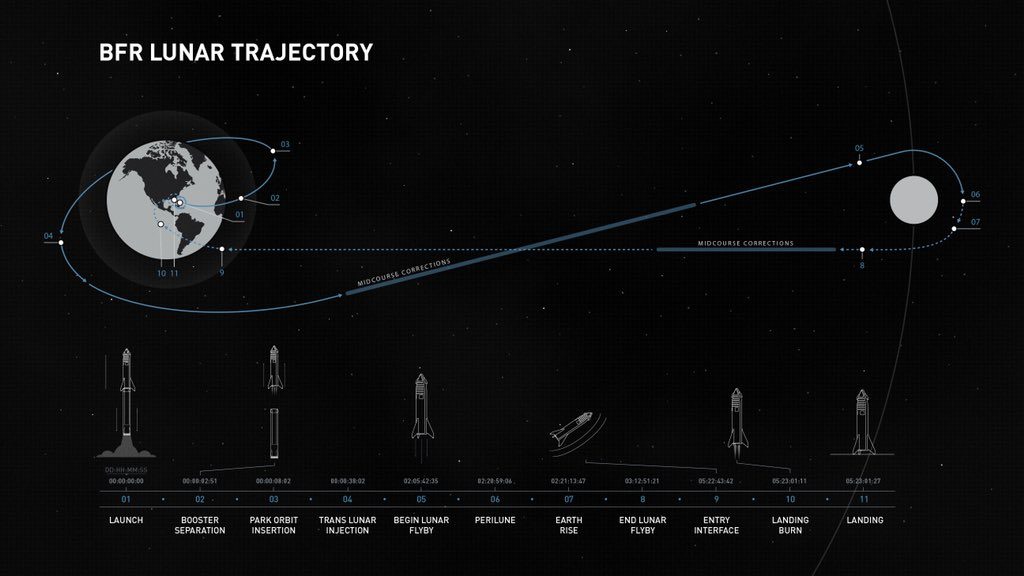 |
|
BFR mission trajectory for 1st private lunar mission.
Credit: SpaceX |
base on the Moon! And we should go there a lot.”
“Finally, I can tell you that I choose to go to the moon,” said
Maezawa. Aged 42, he is the founder of
Zozo or @zozoglobal, Japan’s largest online fashion retail site. He is a
fashion innovator as well as a globally recognized art curator.
“Ever since I was a kid, I have loved the moon,” Maezawa said
during the webcast. “I am really happy and excited to share this announcement.”
He introduced himself to the crowd as a former musician who briefly
lived in the United States when he was 18.
“Just staring at the moon
filled my imagination. That is why I could not pass up this opportunity to see
the moon up close.”
also already paid a significant down payment that will really help SpaceX pay
for the huge costs to develop BFR.
“Yusaku will be bringing 8 brave artists
& cultural figures with him on the journey around the moon,” said Musk.
“He’s a very brave person to do this. He is paying a lot of money that will help
with the development of this ship and booster, and ultimately this system,”
Musk said.
“This BFR system is intended to be able to
carry anyone to orbit, and to the moon, and to Mars, so he ultimately is
helping pay for the average citizen to be able to travel to other planets. It’s
a great thing.”
Maezawa is buying all the tickets on the ship
which eventually could carry up to 100 passengers on voyages to Mars and other deep
space destinations. He will give those seats away free to the artists who
accompany him.
“I choose to go to the Moon with artists,” said
Maezawa.
The artists could be quite a varied lot
including painters, photographers, musicians, film directors, fashion designers
and architects.
The project is to be called
dearMoon, #dearMoon, @dearmoonproject.
The artists will be on board to inspire
humanity and will be expected to create inspirational works of art after they
return home to a rocket assisted precision guided touchdown Earth, landing on 3
legs. 2 of the legs have articulating fins
and only 1 is immovable.
The actual artist passengers have yet to be
selected and will be invited as the launch date gets closer.
“In 2023, as the host, I’d like to invite six
to eight artists from around the world to join me on this mission to the moon,”
Maezawa said. “These artists will be asked to create something after they
return to Earth, and these masterpieces will inspire the dreamer within all of
us.”
The fact that Maezawa would donate the seats “restores
my faith in humanity” Musk stated several times.
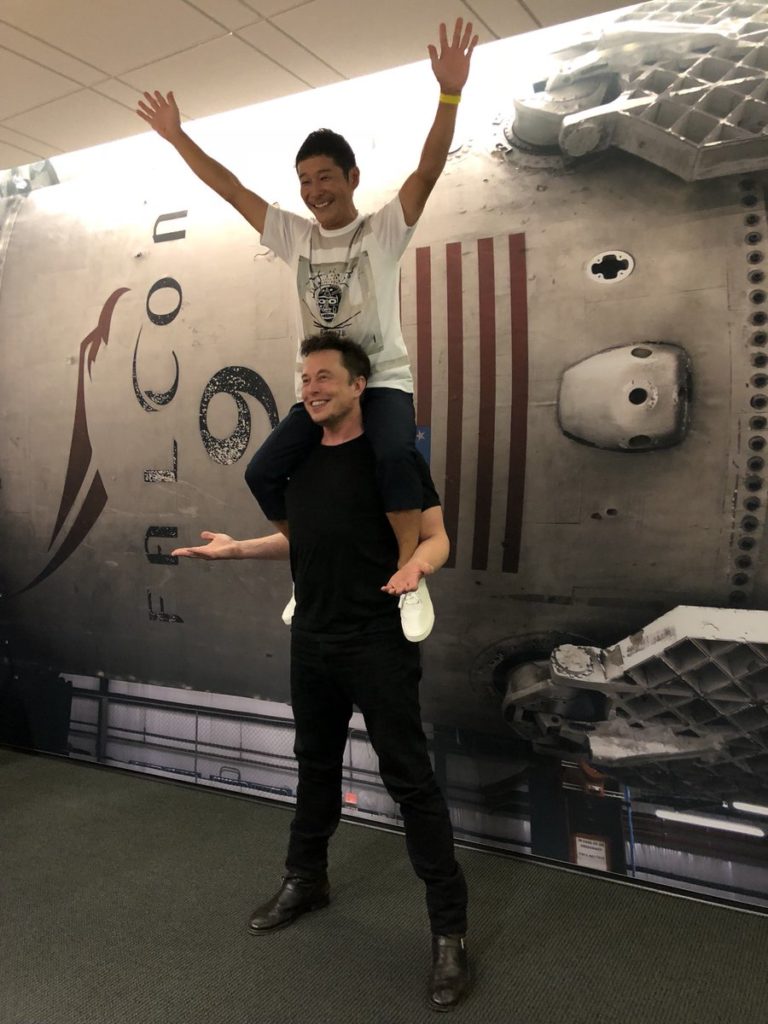 |
|
Hanging out with @yousuck2020
before the @SpaceX moon mission announcement. Credit: SpaceX, Elon Musk |
additional funding for BFR. It will “cost
at least $5 Billion and maybe up to $10 Billion, and not less than $2 Billion,”
he added during a Q & A session.
design.”
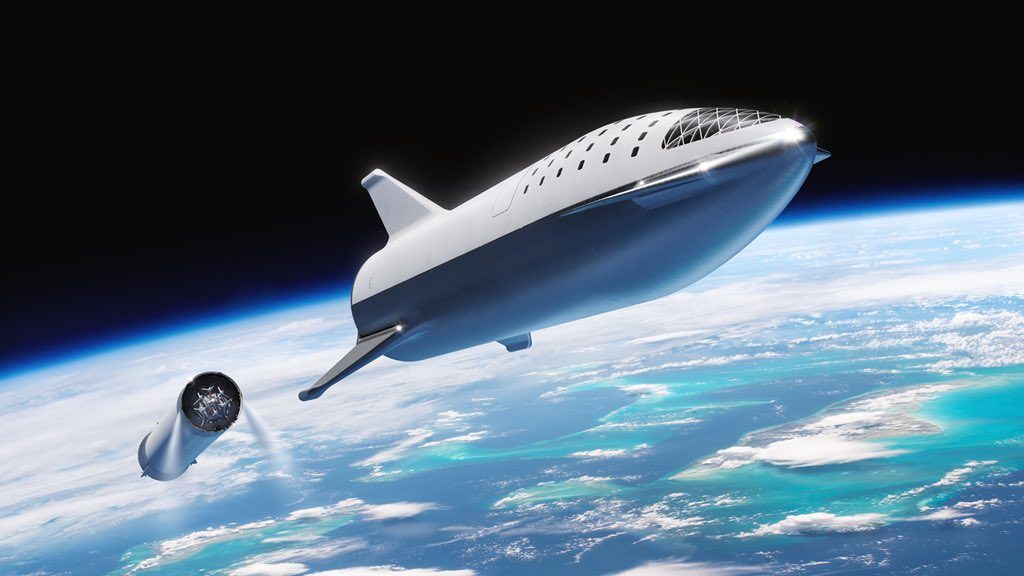 |
|
Artists rendition of SpaceX BFR rocket intended to send 1st
private passenger on a mission around the Moon. Credit: SpaceX |
The two stage BFR rocket, known as Big Falcon
Rocket, comprises the BFR rocket and the BFS spaceship housing the crew, living
quarters and cargo. It will be an entirely
reusable system. Additional fuel will be availed by space based fuel depots. The BFS can land on the Moon, Mars and Earth.
transport system that’s capable of getting from Earth to anywhere in the solar
system as long as you establish propellant depots along the way,” Musk said.
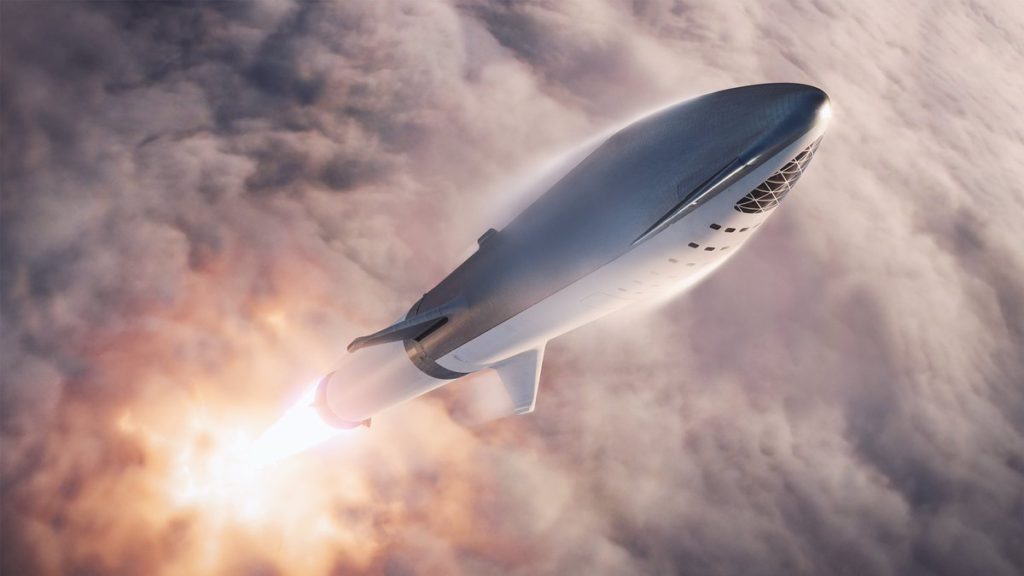 |
|
Artists rendition of SpaceX BFR rocket intended to send 1st
private passenger on a mission around the Moon. Credit: SpaceX |
the most powerful rocket in history, capable of carrying humans to the Moon,
Mars, and beyond,” as described by Musk and SpaceX.
future where humanity is out exploring the stars is fundamentally more exciting
than one where we are not.”
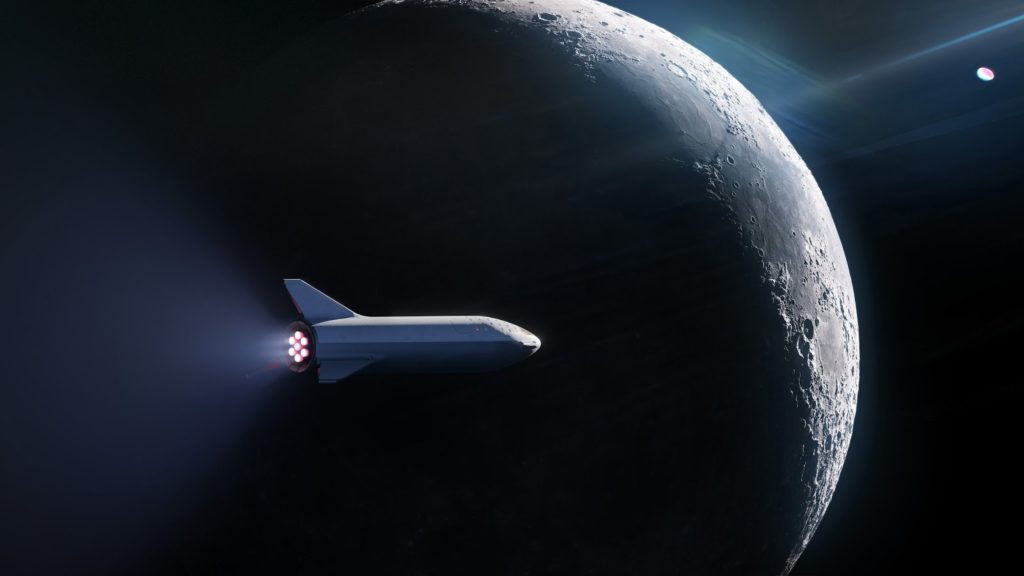 |
|
Artists rendition of SpaceX BFR rocket intended to send 1st
private passenger on a mission around the Moon. Credit: SpaceX |
The BFR rocket will stand some 387 feet tall (118 meters) overall.
reperesents a significant change from earlier plans announced by Elon Musk
about 18 months ago to much fanfare when he said in Feb 2017 that two private
paying passengers – whose names were not revealed – would launch in a Crew
Dragon atop the Falcon Heavy rocket by late 2018.
person to purchase those tickets
year, Musk cancelled that intended lunar Falcon Heavy mission, which finally
flew on its maiden mission in February of this year from Launch Complex 39A at
the Kennedy Space Center. Falcon Heavy
will not be human rated he added.
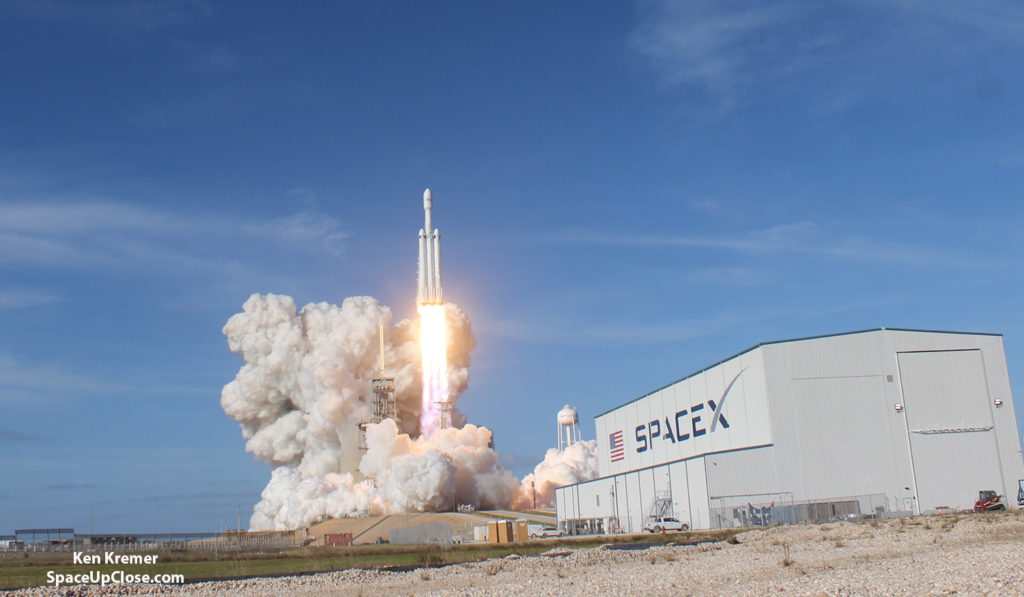 |
|
Launch of SpaceX Falcon Heavy on debut test
flight from Launch Complex 39A at NASA’s Kennedy Space Center in Florida on Feb. 6, 2018. Credit: Ken Kremer/SpaceUpClose.com/kenkremer.com |
“It looks like BFR
development is moving quickly, and it will not be necessary to qualify Falcon
Heavy for crewed spaceflight,” Musk said during Falcon Heavy media briefing with
reporters. “We kind of tabled the Crew Dragon on Falcon Heavy in favor of
focusing our energy on BFR.”
The Crew Dragon
has not yet flown but the maiden unpiloted mission is currently slated for sometime
in December 2018, Musk stated.
Musk acknowledged that the 2023 BFR launch date
is aspirational and may well fly later or maybe even not at all. There are no
guarantees.
“This is dangerous. Not a walk in the park. Its
not a sure thing. Something could go wrong,” Musk stated.
He stated that some initial BFR test components
have already been built.
Initial “hop” tests of the BFS will be conducted
in 2019 at the SpaceX facility in Brownsville, Texas.
High velocity tests are planned for 2020.
Orbital tests could commence “in 2 or 3 years.”
“There will be many test flights before people
are launched.”
The actual launch BFR launch site has not been
selected and could even be offshore.
Musk was also clear that his top priority is
NASA regarded the start of commercial crew flight to the ISS in 2018,
continuing resupply missions, as well as for the US Military and his commercial
satellite customers.
NASA’s Apollo 17 was the
last human mission to launch to the Moon in 1972 with two NASA astronauts
making three EVA spacewalks on the lunar surface.
NASA is developing the
Space launch System (SLS) heavy lift rocket and Orion deep space crew capsule
to send Americans back to the Moon.
The first piloted Orion
is slated for launch on SLS in 2022 NASA officials told Space UpClose in an
interview last week at the Kennedy Space Center.
Watch for Ken’s
continuing onsite coverage of NASA, SpaceX, ULA, Boeing, Lockheed Martin,
Orbital ATK and more space and mission reports direct from the Kennedy Space
Center, Cape Canaveral Air Force Station, Florida and Wallops Flight Facility,
Virginia.
Stay tuned here for Ken’s continuing Earth and Planetary science and human
spaceflight news: www.kenkremer.com
–www.spaceupclose.com – twitter @ken_kremer – email: ken at kenkremer.com
Ken’s photos are for sale and he is available for lectures and outreach events


